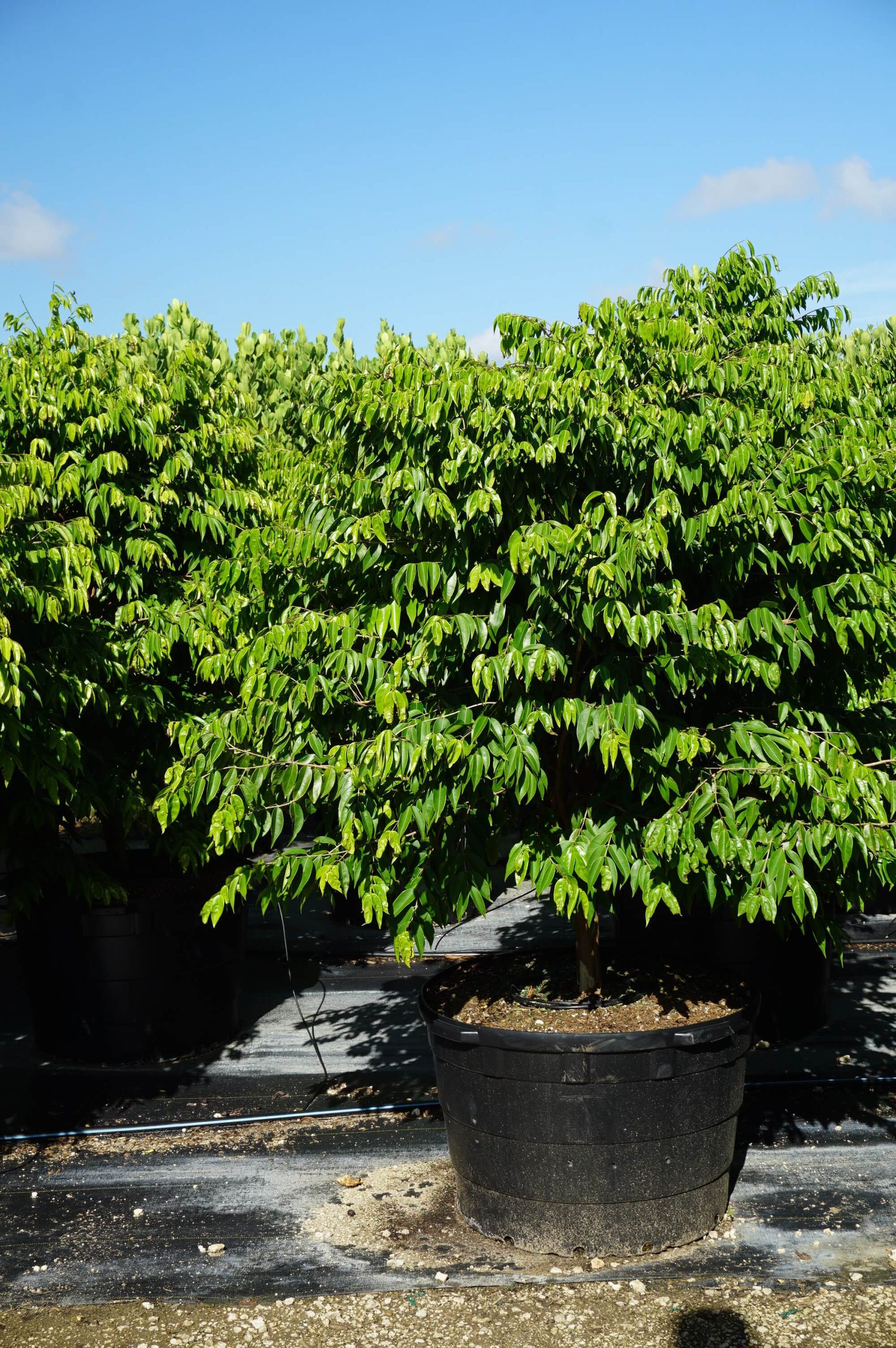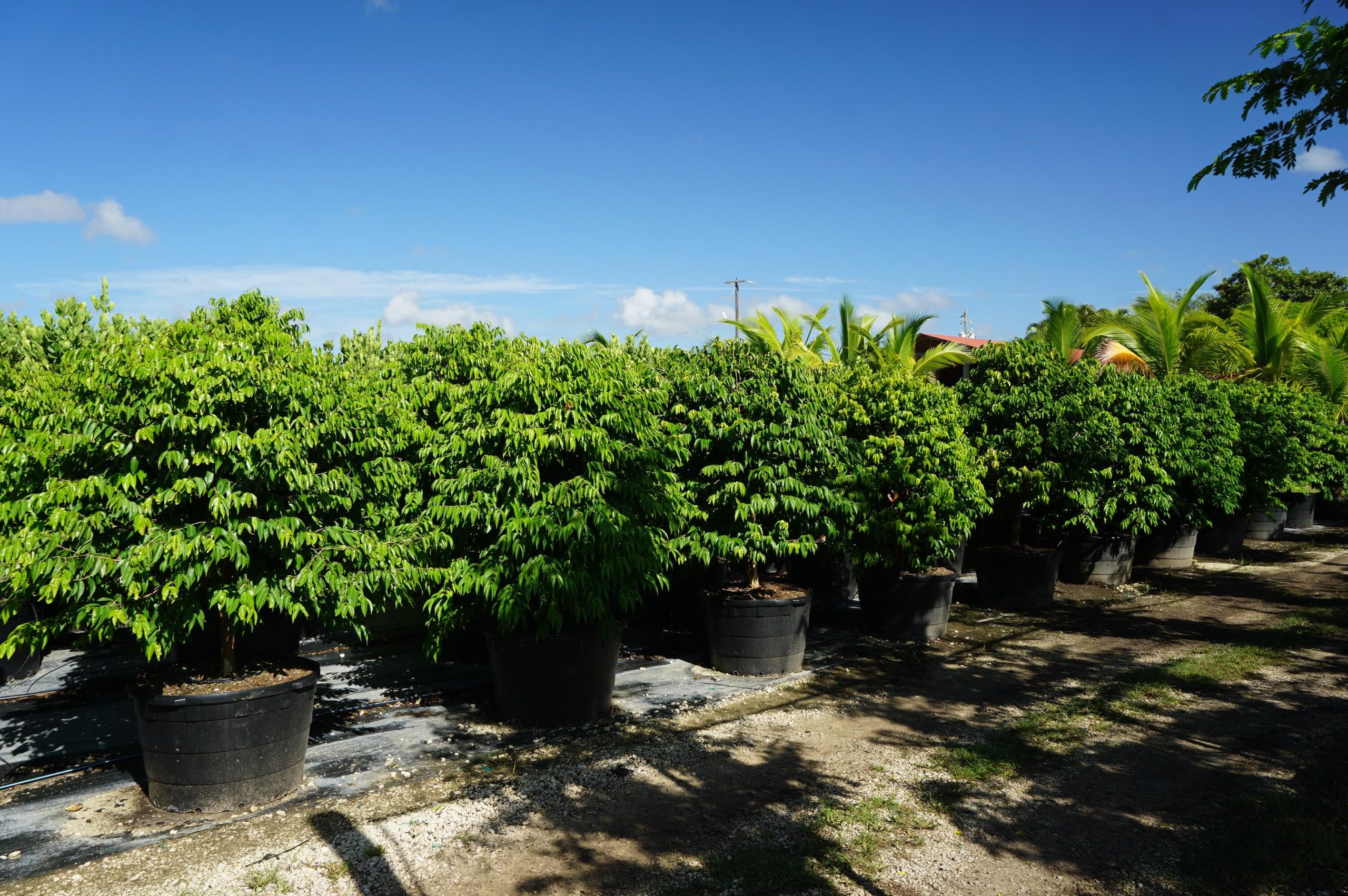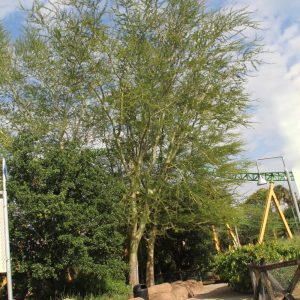Description
Myrciaria cauliflora (Jaboticaba) is a popular native Brazilian fruit tree or shrub. It reaches a height of 15 to 30 feet and spread up to 18 feet. It is profusely branching crown, branches angling upward to form a dense rounded or vase-like symmetrical crown. The attractive bark is smooth, reddish-brown, peeling to reveal cream to gray underbark. Leaves are entire, simple, opposite, lance-shaped to elliptical, and 1 to 4 inches long. Young leaves are color salmon becoming dark green when mature. Also, flowers are small, white, under 1/4 inch across, with numerous stamens, typically borne in groups of 4 directly on the trunk and large branches; hence the species name.
Furthermore, the fruits are round, black, grape-like with a glossy thick skin, and contain fleshy pulp and 1 to 5 seeds. The fruits are commercialized, tasty when eaten fresh, crushed for juice and made into jam and jelly. Propagation may be by seed, air layering or root cuttings. In cultivation, the tree prefers moist, rich, slightly acidic soils with good drainage. Regular watering will induce continuously flowering and fruiting.
Besides, pruning is necessary to shape Myrciaria cauliflora (Jaboticaba) as a single trunk or multiple trunks. This tree with its trunk and branches festooned with white flowers and black fruits is striking as an accent or specimen plant in small or large garden. It can also be trained as a bonsai plant.







